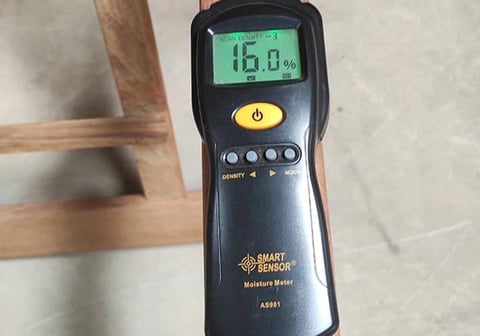Ensuring Excellence: Quality Control Procedures for Tropical Hardwood Furniture
Quality begins at the source. For tropical hardwood furniture, this means selecting the finest woods from sustainable forests. Forestry experts assess the maturity and health of trees, ensuring that the wood has the right density and moisture content for furniture making.
TEAK FURNISHINGS
2/5/20243 min read


Ensuring Excellence: Quality Control Procedures for Tropical Hardwood Furniture
When it comes to tropical hardwood furniture, the allure of its rich grains and robust longevity is undeniable. However, the true measure of its value lies beneath the surface, in the rigorous quality control procedures that underpin its craftsmanship. Among these critical checks is the drop test, an essential assessment that guarantees each piece not only meets aesthetic standards but holds up under stress. In this blog post, we’ll explore the quality control processes that ensure your tropical hardwood furniture stands the test of time and use.
Step 1: Sourcing and Selection of Wood
Quality begins at the source. For tropical hardwood furniture, this means selecting the finest woods from sustainable forests. Forestry experts assess the maturity and health of trees, ensuring that the wood has the right density and moisture content for furniture making. This initial step is crucial as it sets the foundation for the durability of each furniture piece.
Step 2: Craftsmanship and Assembly
Skilled artisans turn raw wood into stunning furniture pieces. Throughout this process, craftspeople adhere to strict guidelines to maintain the integrity of the wood. Joints are a particular focus; they must be tight and secure without compromising the wood’s structure. As the furniture takes shape, it undergoes inspections to ensure that the assembly meets design specifications and quality standards.
Step 3: Finishing Touches
The beauty of tropical hardwood furniture is enhanced with finishes that bring out the natural luster of the wood. Each piece is sanded, stained, and sealed with precision. Quality control at this stage involves checking for an even application of finishes, ensuring there are no drips or inconsistencies that could affect the wood's appearance and protection.
Step 4: The Drop Test
The drop test is a pivotal part of the quality control process, particularly for furniture destined for shipping. This test simulates the impacts and stresses furniture may encounter during transit. The procedure involves elevating furniture to a specific height and then dropping it onto a hard surface. It's not as reckless as it sounds; the test is calculated and done in a controlled environment to mimic various drop scenarios. The goal is to ensure that the piece retains its structure without any damage. If weaknesses are identified, the design goes back to the drawing board to reinforce its durability.
Step 5: Final Inspections and Audits
Before any piece of furniture leaves the production floor, it undergoes a comprehensive final inspection. This includes a detailed checklist covering everything from structural integrity to aesthetic appeal. Audits are periodically performed to ensure that the quality control process itself maintains the highest standards and that all team members are trained to identify and rectify any issues.
Step 6: Packaging and Dispatch
The last step of the quality control process is the packaging. Furniture is wrapped and cushioned to prevent any movement that could cause wear or damage during transport. The packaging materials themselves are also subject to quality control, ensuring that they are robust enough to protect the furniture on its journey to the customer.
Conclusion
The journey of tropical hardwood furniture from the forest to your living room is paved with stringent quality control measures. These procedures ensure that each piece is not only a work of art but also a symbol of enduring quality. The drop test is just one of the many rigorous tests that furniture must pass, but it's a vital one, ensuring that your investment remains as resilient as it is beautiful. When you choose tropical hardwood furniture, you’re not just choosing a piece for your home; you’re choosing a legacy of quality that can last for generations.





